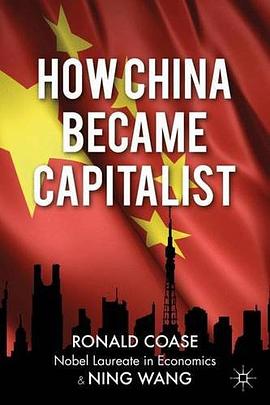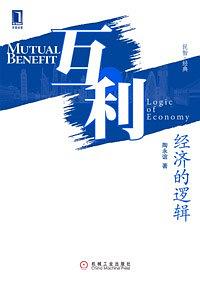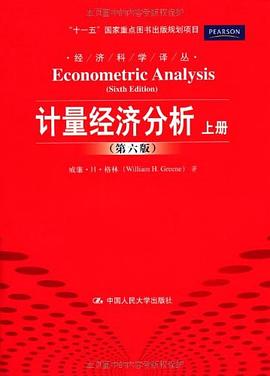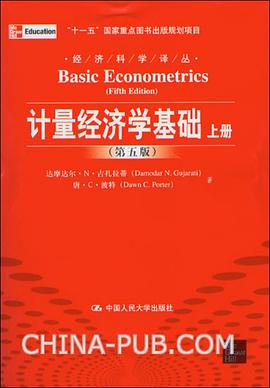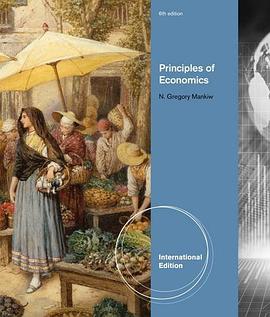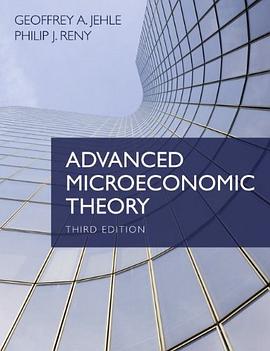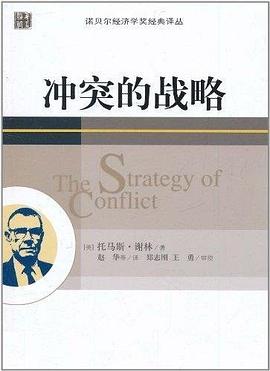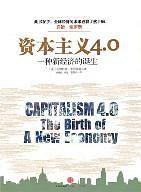
Pillars of Prosperity pdf epub mobi txt 電子書 下載2025
- 經濟學
- 政治經濟學
- 經濟
- 製度
- Economics
- 政治學
- politics
- 政治經濟
- 財富成長
- 個人發展
- 成功學
- 經濟原理
- 自我提升
- 商業智慧
- 生活哲學
- 目標設定
- 自律管理
- 積極思維

具體描述
"Little else is required to carry a state to the highest degree of opulence from the lowest barbarism, but peace, easy taxes, and a tolerable administration of justice; all the rest being brought about by the natural course of things." So wrote Adam Smith a quarter of a millennium ago. Using the tools of modern political economics and combining economic theory with a bird's-eye view of the data, this book reinterprets Smith's pillars of prosperity to explain the existence of development clusters--places that tend to combine effective state institutions, the absence of political violence, and high per-capita incomes.
To achieve peace, the authors stress the avoidance of repressive government and civil conflict. Easy taxes, they argue, refers not to low taxes, but a tax system with widespread compliance that collects taxes at a reasonable cost from a broad base, like income. And a tolerable administration of justice is about legal infrastructure that can support the enforcement of contracts and property rights in line with the rule of law. The authors show that countries tend to enjoy all three pillars of prosperity when they have evolved cohesive political institutions that promote common interests, guaranteeing the provision of public goods. In line with much historical research, international conflict has also been an important force behind effective states by fostering common interests. The absence of common interests and/or cohesive political institutions can explain the existence of very different development clusters in fragile states that are plagued by poverty, violence, and weak state capacity.
著者簡介
Timothy Besley is the Kuwait Professor of Economics and Political Science, and director of the Suntory and Toyota International Centres for Economics and Related Disciplines at the London School of Economics and Political Science.
Torsten Persson is the Torsten and Ragnar Soderberg Chair in Economic Sciences and professor of economics at the Institute for International Economic Studies, Stockholm University.
圖書目錄
Series Foreword ix Preface xi
CHAPTER 1: Development Clusters 1
1.1 Salient Correlations 6
1.2 The Main Questions 10
1.3 Fiscal Capacity 11
1.4 Legal Capacity 14
1.5 Political Violence 22
1.6 State Spaces 27
1.7 Development Assistance 31
1.8 Political Reform 32
1.9 Main Themes 34
1.10 Final Remarks 37
1.11 Notes on the Literature 38
CHAPTER 2: Fiscal Capacity 40
2.1 The Core Model 45
2.1.1 Basic Structure 46
2.1.2 Politically Optimal Policy 50
2.1.3 Fiscal-Capacity Investments 52
2.1.4 Normative Benchmark: A Pigouvian Planner 54
2.1.5 Three Types of States 56
2.1.6 Taking Stock 63
2.2 Developing the Model 64
2.2.1 Microfoundations for Fiscal Capacity 64
2.2.2 More General Models for Public Goods 67
2.2.3 Polarization/Heterogeneity 70
2.2.4 Income Inequality 73
2.2.5 Differences in Group Size 78
2.2.6 Tax Distortions 79
2.2.7 From Trade to Income Taxes 83
2.2.8 An Infinite-Horizon Model 86
2.3 Empirical Implications and Data 91
2.4 Final Remarks 99
2.5 Notes on the Literature 99
CHAPTER 3: Legal Capacity 103
3.1 The Core Model with Legal Capacity 108
3.1.1 Politically Optimal Policy 109
3.1.2 Investments in State Capacity 110
3.1.3 Comparative Statics 113
3.1.4 Taking Stock 117
3.2 Developing the Model 118
3.2.1 Microeconomic Foundations 118
3.2.2 The Genius of Taxation 131
3.2.3 Private Capital Accumulation 138
3.2.4 Predation and Corruption 144
3.3 Empirical Implications and Data 156
3.4 Final Comments 164
3.5 Notes on the Literature 165
CHAPTER 4: Political Violence 169
4.1 The Core Model with Political Violence 175
4.1.1 Model Modifications 175
4.1.2 Policy 177
4.1.3 Investments in Political Violence 179
4.1.4 Empirical Implications 185
4.2 Developing the Model 189
4.2.1 Asymmetries 189
4.2.2 Polarization, Greed, and Grievance 190
4.2.3 Anarchy 191
4.2.4 Conflict in a Predatory State 192
4.2.5 Investing in Coercive Capacity 193
4.3 From Theory to Empirical Testing 194
4.4 Data and Results 198
4.4.1 Data 198
4.4.2 Cross-Sectional Correlations 201
4.4.3 Econometric Estimates 202
4.5 Final Remarks 211
4.6 Notes on the Literature 213
CHAPTER 5: State Spaces 215
5.1 State Capacity in the Comprehensive Core Model 216
5.1.1 Equilibrium Political Turnover 216
5.1.2 Investments in State Capacity Revisited 219
5.2 Developing the Model 223
5.3 Empirical Implications 227
5.4 Putting the Pieces Together 231
5.5 Final Remarks 234
5.6 Notes on the Literature 235
CHAPTER 6: Development Assistance 237
6.1 The Core Model with Aid 242
6.1.1 Cash Aid 243
6.1.2 Technical Assistance 250
6.1.3 Military Assistance 253
6.1.4 Postconflict Assistance 254
6.2 Final Remarks 256
6.3 Notes on the Literature 257
CHAPTER 7: Political Reform 259
7.1 The Core Model and Political Reform 264
7.1.1 Political Reform under a Veil of Ignorance 265
7.1.2 Strategic Political Reform 267
7.2 Developing the Model 271
7.2.1 Micropolitical Foundations for ? 271
7.2.2 Micropolitical Foundations for ? 275
7.2.3 Constitutional Rules 280
7.2.4 Political Violence 282
7.2.5 Trust 287
7.2.6 Governance 290
7.3 Political Reform in Practice 293
7.4 Final Remarks 298
7.5 Notes on the Literature 299
CHAPTER 8: Lessons Learned 302
8.1 What We Have Learned 303
8.1.1 Answers to the Three Main Questions 303
8.1.2 Our Analysis and Traditional Development Research 307
8.2 The Pillars of Prosperity Index 310
8.2.1 Defining the Index 310
8.2.2 Predicting the Index 319
8.3 Where Next? 325
8.4 Concluding Remarks 332
References 333
Name Index 357
Subject Index 363
· · · · · · (收起)
讀後感
評分
評分
評分
評分
用戶評價
花瞭10天時間仔細推瞭第二章(the core model and extensions)。第三章之後其實也是基於核心模型的各種extension,匆匆瀏覽瞭setting。基本的intuition:fiscal capacity的好處來自於增加未來的稅收,進而可以變成公共品/transfer;對fiscal capacity的投資於是受到public funds的expected value和下一期是否在位的影響,所以各種extension基本也就是在改變這些變量。核心模型非常簡潔,大多數extension也都有很好的intuition。就是貿易的部分覺得有點怪。
评分花瞭10天時間仔細推瞭第二章(the core model and extensions)。第三章之後其實也是基於核心模型的各種extension,匆匆瀏覽瞭setting。基本的intuition:fiscal capacity的好處來自於增加未來的稅收,進而可以變成公共品/transfer;對fiscal capacity的投資於是受到public funds的expected value和下一期是否在位的影響,所以各種extension基本也就是在改變這些變量。核心模型非常簡潔,大多數extension也都有很好的intuition。就是貿易的部分覺得有點怪。
评分花瞭10天時間仔細推瞭第二章(the core model and extensions)。第三章之後其實也是基於核心模型的各種extension,匆匆瀏覽瞭setting。基本的intuition:fiscal capacity的好處來自於增加未來的稅收,進而可以變成公共品/transfer;對fiscal capacity的投資於是受到public funds的expected value和下一期是否在位的影響,所以各種extension基本也就是在改變這些變量。核心模型非常簡潔,大多數extension也都有很好的intuition。就是貿易的部分覺得有點怪。
评分花瞭10天時間仔細推瞭第二章(the core model and extensions)。第三章之後其實也是基於核心模型的各種extension,匆匆瀏覽瞭setting。基本的intuition:fiscal capacity的好處來自於增加未來的稅收,進而可以變成公共品/transfer;對fiscal capacity的投資於是受到public funds的expected value和下一期是否在位的影響,所以各種extension基本也就是在改變這些變量。核心模型非常簡潔,大多數extension也都有很好的intuition。就是貿易的部分覺得有點怪。
评分花瞭10天時間仔細推瞭第二章(the core model and extensions)。第三章之後其實也是基於核心模型的各種extension,匆匆瀏覽瞭setting。基本的intuition:fiscal capacity的好處來自於增加未來的稅收,進而可以變成公共品/transfer;對fiscal capacity的投資於是受到public funds的expected value和下一期是否在位的影響,所以各種extension基本也就是在改變這些變量。核心模型非常簡潔,大多數extension也都有很好的intuition。就是貿易的部分覺得有點怪。
相關圖書
本站所有內容均為互聯網搜索引擎提供的公開搜索信息,本站不存儲任何數據與內容,任何內容與數據均與本站無關,如有需要請聯繫相關搜索引擎包括但不限於百度,google,bing,sogou 等
© 2025 book.quotespace.org All Rights Reserved. 小美書屋 版权所有




